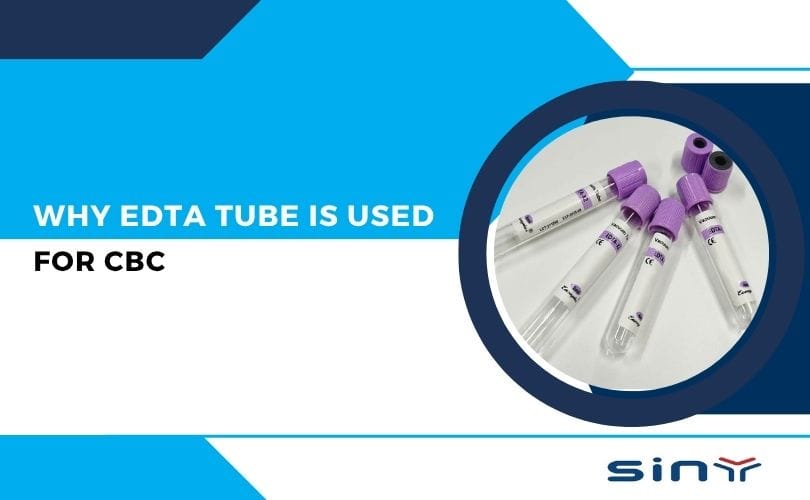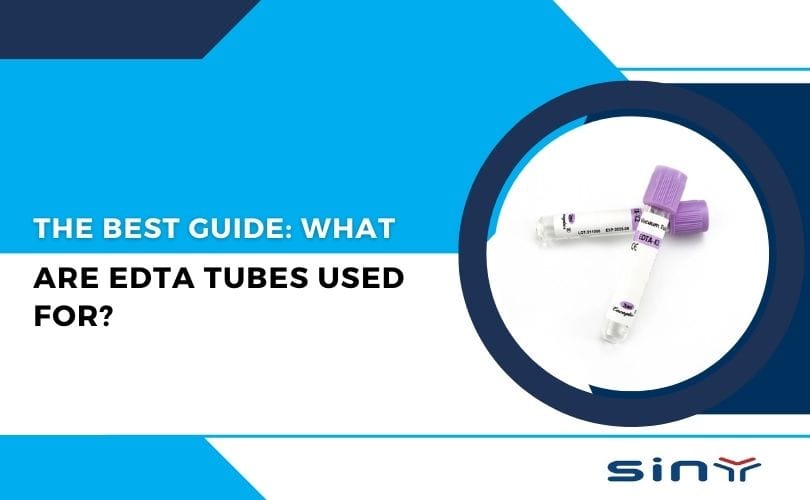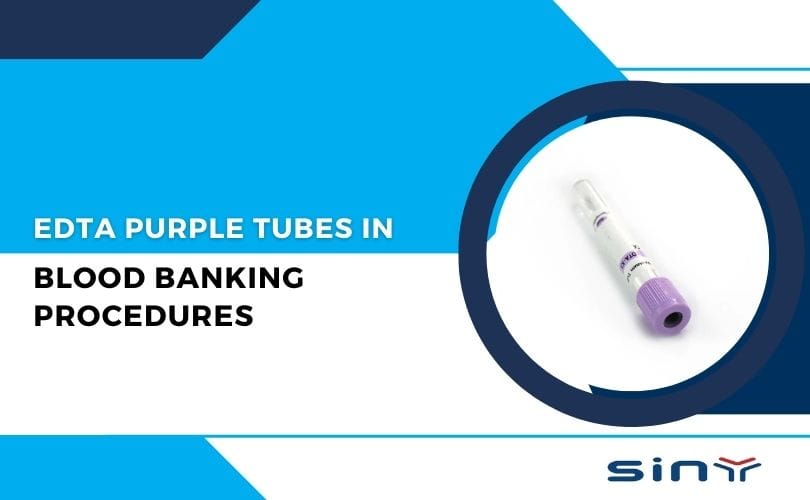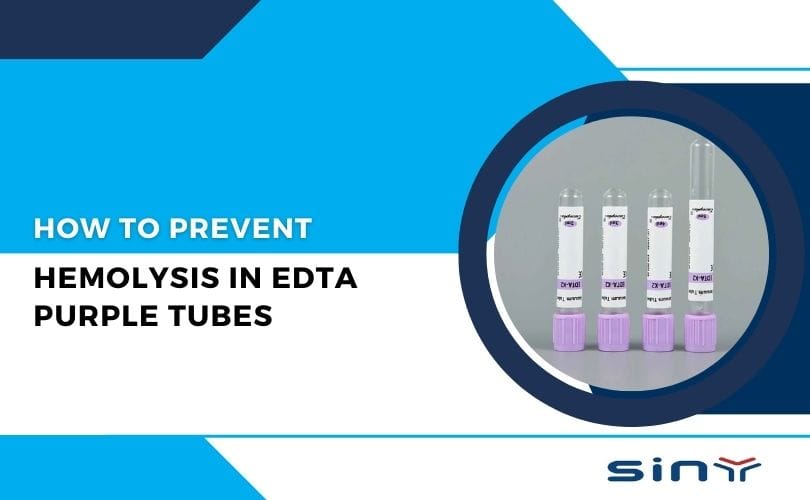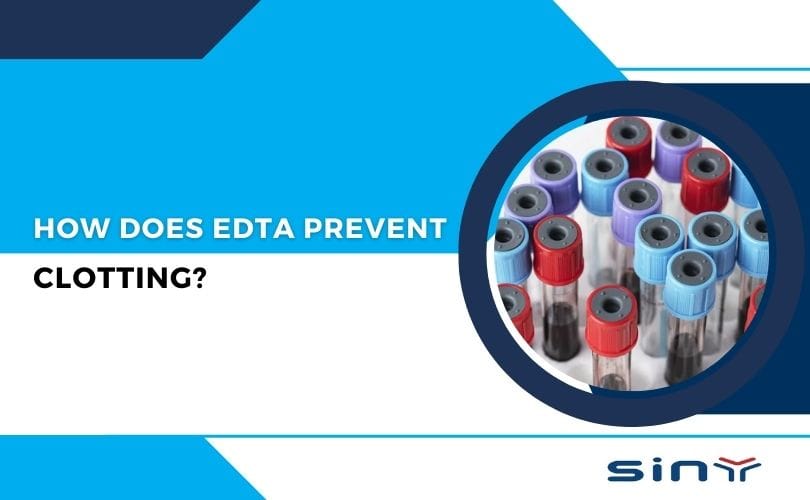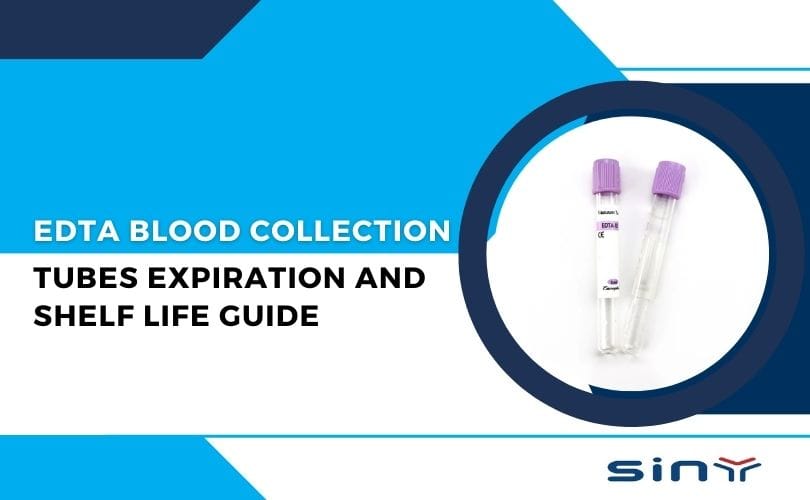A Complete Blood Count (CBC) is one of the most common blood tests performed in medical diagnostics. It provides crucial information about a patient’s overall health, including red blood cells (RBCs), white blood cells (WBCs), platelets, hemoglobin, and hematocrit levels. To ensure accurate results, blood samples must be collected in the right type of tube—most commonly, an EDTA tube.
But why is an EDTA tube used for CBC? The answer lies in EDTA’s ability to prevent blood clotting and preserve cell morphology, ensuring reliable lab results. In this detailed guide, we will explore the science behind EDTA tubes, their role in CBC testing, and best practices for blood collection.
For high-quality EDTA tubes for blood collection, visit our EDTA Tube collection.
What is an EDTA Tube?
Ethylenediaminetetraacetic acid (EDTA) is an anticoagulant commonly used in blood collection tubes. It works by binding calcium ions in the blood, which are essential for the clotting process. By chelating calcium, EDTA prevents coagulation, keeping the blood sample in a liquid state for accurate testing.
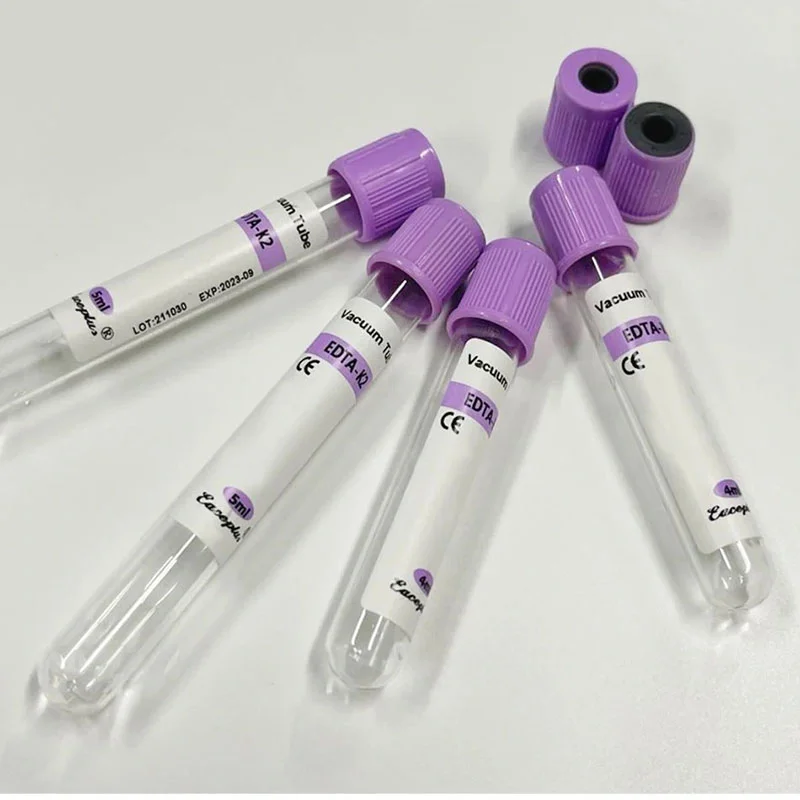
Types of EDTA Tubes
There are two primary types of EDTA tubes used in laboratories:
- K2 EDTA Tubes (Lavender Top) – Contains dipotassium EDTA, ideal for hematology tests like CBC.
- K3 EDTA Tubes (Pink Top) – Contains tripotassium EDTA, often used for blood bank testing.
For more details on EDTA tube types, check our EDTA Tubes for Blood Collection page.
Why is an EDTA Tube Used for CBC?
Prevents Blood Clotting
EDTA tube is used for CBC test requires whole blood to analyze cellular components accurately. If blood clots, it alters cell counts, leading to inaccurate results. EDTA effectively inhibits clotting, ensuring the sample remains stable for testing.
Preserves Cell Morphology
EDTA maintains the shape and integrity of blood cells, preventing distortion that could affect test results. This is crucial for accurate WBC, RBC, and platelet counts.
Minimizes Platelet Clumping
Platelets can clump together if not properly anticoagulated, leading to falsely low platelet counts. EDTA prevents platelet aggregation, ensuring precise CBC results.
Compatible with Automated Analyzers
Modern hematology analyzers require non-clotted blood samples for reliable readings. EDTA tubes provide the optimal sample condition for these machines.
For a deeper understanding of how EDTA tubes work, read our guide on How to Properly Use EDTA Blood Collection Tubes.
How to Collect Blood in an EDTA Tube for CBC
Proper blood collection technique is essential for accurate CBC results. Here’s a step-by-step guide:
- Prepare the Patient – Verify identity, explain the procedure, and ensure the patient is comfortable.
- Select the Right Tube – Use a lavender-top (K2 EDTA) tube for CBC testing.
- Perform Venipuncture – Insert the needle into a suitable vein and collect blood.
- Fill the Tube Correctly – Ensure the tube is filled to the marked line to maintain the correct blood-to-anticoagulant ratio.
- Mix Gently – Invert the tube 8-10 times to mix EDTA with blood, preventing clotting.
- Label and Transport – Properly label the tube and send it to the lab promptly.
For high-quality EDTA tubes, explore our EDTA Tube products.
Common Issues with EDTA Tubes in CBC Testing
While EDTA tubes are the gold standard for CBC, improper use can lead to errors:
- Underfilling the Tube – Insufficient blood can cause excess EDTA, leading to cell shrinkage and false results.
- Overmixing or Vigorous Shaking – Can cause hemolysis, affecting hemoglobin and hematocrit readings.
- Delayed Testing – Prolonged storage may lead to cell swelling or lysis, altering CBC parameters.
To avoid these issues, follow best practices outlined in our EDTA Tube Usage Guide.
Alternatives to EDTA Tubes for CBC
While EDTA is the preferred anticoagulant for EDTA tube is used for CBC, other tubes may be used in specific cases:
- Heparin Tubes (Green Top) – Used for certain chemistry tests but can interfere with cell morphology.
- Citrate Tubes (Blue Top) – Used for coagulation studies but not ideal for CBC.
For specialized needs, check our EDTA Tube collection.
Who Manufactures High-Quality EDTA Tubes?
When accuracy and quality matter, sourcing your tubes from a reputable manufacturer is critical.
🔹 EDTATube.com – Offers premium quality EDTA tubes designed specifically for CBC.
🔹 Siny Medical – One of China’s leading manufacturers with global certifications.
🔹 YouTube Channel – Siny Medical – Check out video tutorials on proper usage and sample handling.
Explore all available EDTA products here: 👉 View Product Range
Conclusion
The EDTA tube is the standard choice for CBC testing due to its ability to prevent clotting, preserve cell integrity, and ensure compatibility with hematology analyzers. Proper blood collection and handling are crucial for accurate results.
For high-quality EDTA tubes, visit EDTATube.com or explore our product range.
FAQ
What color is an EDTA tube?
The standard color is lavender or purple, indicating it contains EDTA as an anticoagulant.
Why is EDTA preferred over heparin for CBC?
Because EDTA preserves cellular morphology better and provides more accurate results.
How long can blood be stored in EDTA tubes?
Typically up to 24 hours at room temperature, but best used within 6–8 hours.
Can EDTA tubes be reused?
Absolutely not. These are single-use to prevent contamination and ensure accuracy.
Where can I buy high-quality EDTA tubes?
Check out edtatube.com and Siny Medical.
How many times should an EDTA tube be inverted?
8 to 10 gentle inversions right after collection to mix the anticoagulant.
Does EDTA interfere with other blood tests?
Yes, it should not be used for tests requiring coagulation or calcium levels, as EDTA binds calcium.

